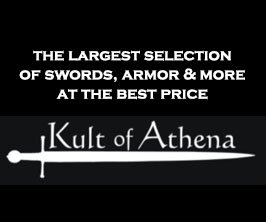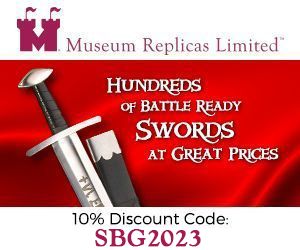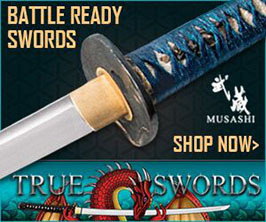Recent Articles
-
Sword Buyers Digest November Edition Out Now
Nov 01, 24 01:49 AM
RK Euro Swords Triple Sword Testing and Review
FULL DISCLOSURE: Until late October 2024, SBG used to stock Ronin Katana swords ourselves, however our companies officially parted ways with this company as explained on this post from our store blog.. The issues do not related to the products themselves, but rather to a disagreement on business practices and standards and changes no facts about the original review, only that we don't sell them anymore..
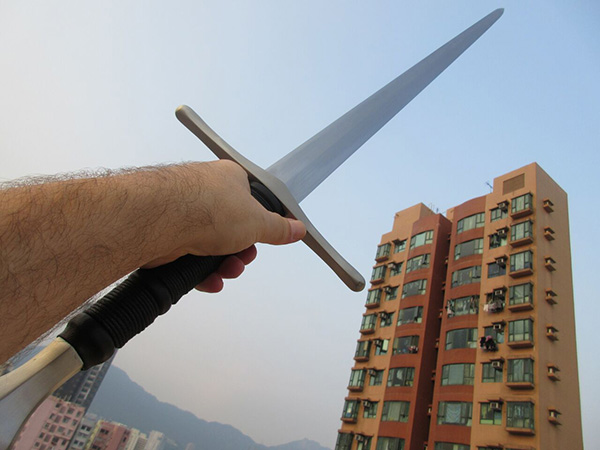
Ronin Katanas first foray into Euro Swords was not an easy process and took a lot of trial and error to arrive at the three models we will be reviewing here.
But after many tribulations, a solid foundation has been laid - and here we will be taking a hands on look to see if they achieved their lofty goal, which was to provide sword collectors with a range of the best value for money, solid performing Euro swords that are durable, able to cut straight out of the box and extremely affordable.
RK Euro Swords Models 7, 8 and 9
Review by SBG Editor in Chief, Paul Southren
Ronin
Katana has been in business since 2005 specializing in a range of heavy duty,
entry level cutting Katana for the dojo and the backyard. But in 2015 they
began branching out into Euro swords, attempting to address a trend in the
market for medieval swords which had seen them steadily climbing in price and
putting them out of reach of the average collector on a budget..
To
do this, they had several prototypes made by sword forges based in Longquan,
China - the forges having cut their teeth making blades and fittings for
Valiant Armory. Unfortunately, these fittings were the same ones that
had been originally designed for the exclusive use of Valiant Armory - and by
the time they found out, a large batch of these swords was getting ready to
leave the forge and hit the market, which created quite a fuss over copyright and who owns what - not exactly the most ideal launch in history...
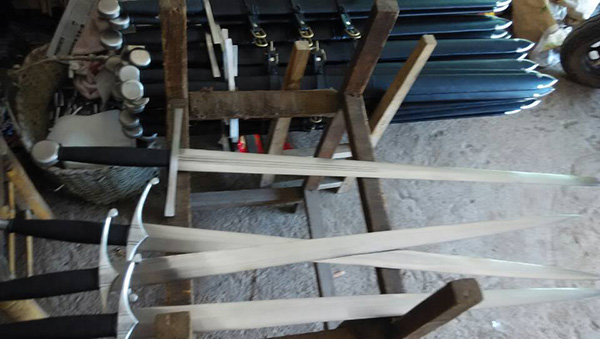
At great expense Ronin had every sword remounted in newly designed fittings at, but the troubles did not end there..
The first 6 models were designed to be fully dis-mountable with a hex nut and allan key - a common practice first introduced to the market by Angus Trim and Michael Tinker Pearce for easy dis-assembly and customization. However, upon arriving in the USA, it was found that the forge had taken a shortcut and instead of the tang being made from one piece, they had decided to weld the thread to the tang..
If the weld is done well, this is not a problem - however, being production swords - the weld was not consistent and even though initial hard tests had not discovered any lemons, they were out there.
Over time, it seems that they have ironed out most of these early issues, and here I had the pleasure of testing three of these 'improved' Euro swords myself: Model 7, a Longsword, Model 8 a Viking sword and Model 9, a single handed arming sword..
The Second Generation
My first chance to spend any real time handling, photographing and testing these swords occurred in Hong Kong with my friend Lancelot Chan of Realistic Sparring Weapons and one of his students and SBG forum members, Anthony Choi.
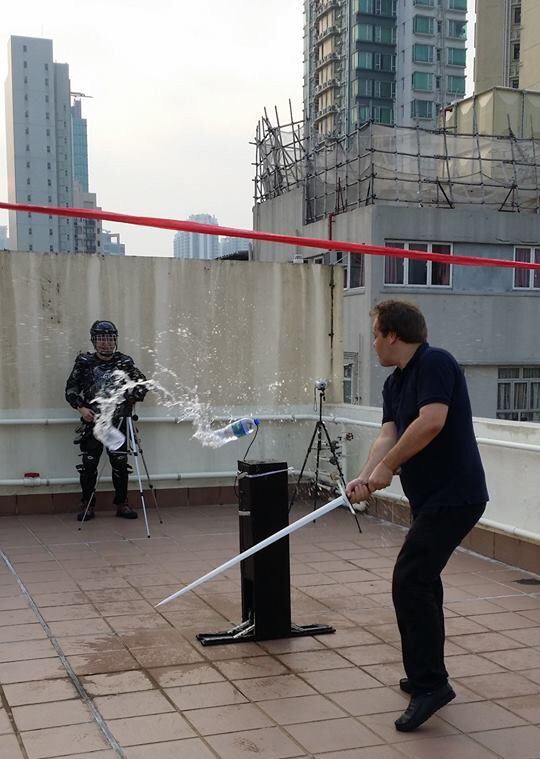
The swords themselves were sent straight from the forge in Longquan to Lancelot in Hong Kong and, for the sake of expediency, had only a basic scabbard instead of the upgraded scabbard with belt and suspension system which is included as a free bonus. But as we only wanted to test the blades - and it is really nothing more than a nice added extra - this did not matter too much.
Now as we are reviewing three of the RK Euro swords at the same time in this review, I will not go into great detail on each individual sword - but rather take a look at the good and the bad points of the line as a whole. However here are some impressions that each sword left on me, then we will get to the meat and potatoes and the testing..
Model 7 - The Longsword

Not based on any particular medieval longsword, but rather a historically plausible sword representative of this type of sword, model 7 is a decent handling blade with a 7 inch handle for two handed use and a very long, sharply tapering 36 inch blade. Surprisingly the weight is 3lbs 3oz, which is a tad overweight for a sword of this class but it does not feel heavy in the hand as much of the balance is shifted back towards the hilt due to the steeply pointed tip.
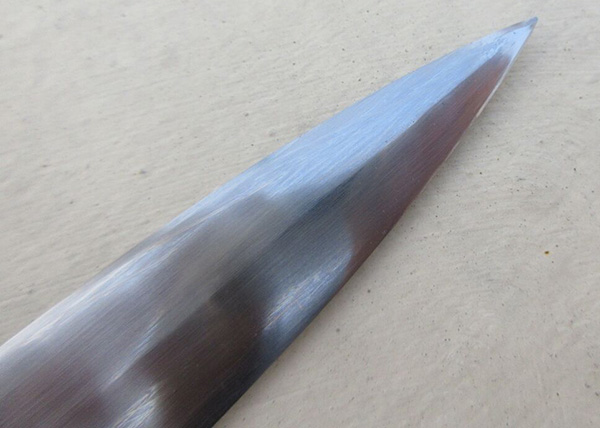
The tip itself was slightly damaged in transit, but still proved to be very effective in the thrust.
Model 8 - The Viking Sword

Of the three RK Euro swords, this was probably my least favorite in terms of the hilt - which Lancelot described as "looks like it's lego" but was forgiven for the wide, sharp Viking style blade (though it's still more like a later period medieval arming sword than a genuine replica of historical Viking Sword).
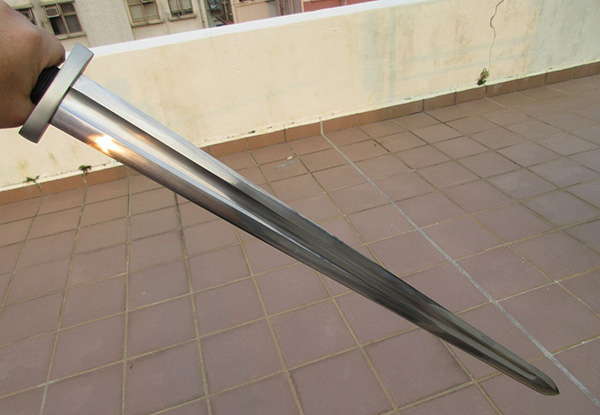
Weighing 2lbs 9.5 oz it is on the heavier side for a Viking sword but sweeps through targets with surprising grace and speed, quite possibly counterbalanced by the overly chunky vaguely Viking style pommel.
My main criticism of this sword is that the hilt is much roomier than a real Viking sword was - however this was done on purpose as many people find the smaller grip painful to wield as it requires a specialist grip that most casual sword collectors are probably not aware of, but it makes it look a bit roomy and is not at all authentic.
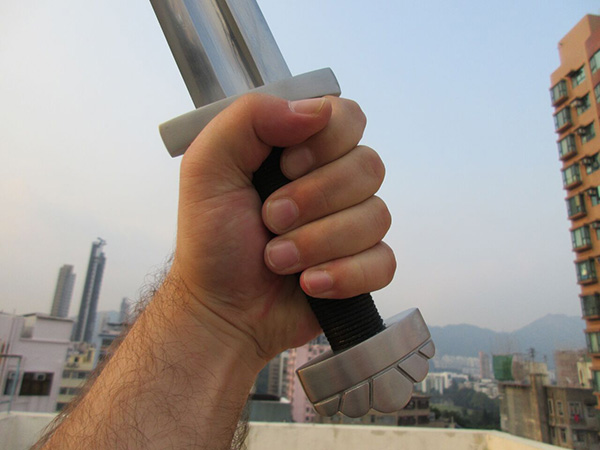
Overall, my initial impressions of this sword was an excellent blade with overly clunky looking, clumsy hilt furniture.
Model 9 - The Arming Sword
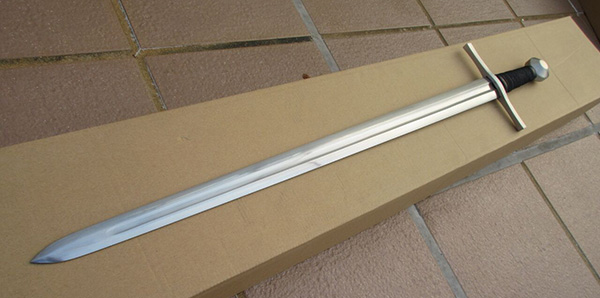
Of all the three swords, the Arming sword was probably my favorite. It reminded me of the Windlass European sword but with a better grip, larger pommel and keener edge out of the box minus the secondary bevel.

Whether by accident or design, the 2lb 10oz blade feels really well balanced and easy to wield. It also feels extremely solid and powerful when cutting and was quite a joy to use.
Fit and Finish
Now back to the Euro swords as a whole - as they all have several things in common - the first being peened pommels, which you can plainly see in the middle of the oversized model 8 Viking sword below.

This was a welcome departure from the first 6 models which had a hex nut assembly and is a traditional method of ensuring maximum hilt durability. Combine this with blades that have a well defined center of percussion and there is little sense of vibration in the hand when cutting, which ensures the peens will hold as long or longer than any historical sword would..
The actual hilting is well done and tightly assembled with no looseness, shifting or rattling and the blade of each model mates closely to the cross guard leaving no space to clink around or work loose which I was rather impressed with.
Here is a top down view of the Model 7 Longsword:

Note also the relative thickness of the cross guard.
Model 8, with the chunkiest fittings, also had a nice fit around the central fuller and was solidly assembled and model 9 was almost identical in its fit.


All in all, these Euro swords were very nicely assembled and while the fittings are big and chunky, they certainly feel very strong and durable.
Of all the fittings, I liked the scent stopper pommel of the Model 7 the best - it felt like a small mace and was no doubt a large factor behind why the longsword felt so well balanced in the hand.

As you can also see, each sword has a tightly wrapped leather hilt and none were in any way uncomfortable in the hand - a very important point when you will be using a sword for test cutting over an extended period.
The blades themselves were all rather nicely done. Each one seemed decently sharp straight out of the box, none were in any way whippy or sagged when held horizontally, and all had a decent satin finish so you can cut slightly abrasive targets like cardboard boxes without fear of scratching up the surface.

All in all, they seemed like decent entry level Euro swords - nice and tight assembly, decently honed, solid blades and despite all being slightly on the heavy side - quite possibly due to the thickness of the fittings, they all handled well and seemed ready for some cutting!

TEST CUTTING!
For our tests we had 5 main targets of increasing difficulty and in addition to the Euro swords, also tested some mid to high end Katana on the same day, of which we gained some interesting comparative results..
The first target, and perhaps the most common, were some water filled PET bottles which are primarily used to test edge alignment and sharpness.
Now quite often entry level somewhat overbuilt Euro swords can struggle with water bottles as the edge is often somewhat blunt out of the box. Not so with the RK Euro swords however!

Each
of the three swords sailed through the bottles with no problems - indeed the
only problems came from my crappy technique when I attempted a thrust through a
water bottle and missed the first two times..! (though the third time was quite rewarding as it buried itself to the hilt).
 Out of practice, terrible misses
Out of practice, terrible misses That's more like it!
That's more like it!With good preliminary results, we upped the ante significantly with tightly rolled soaked newspapers with PVC pipe cores and super thick bamboo: quite challenging targets for Euro swords that were really intended for testing the Katana on the day.
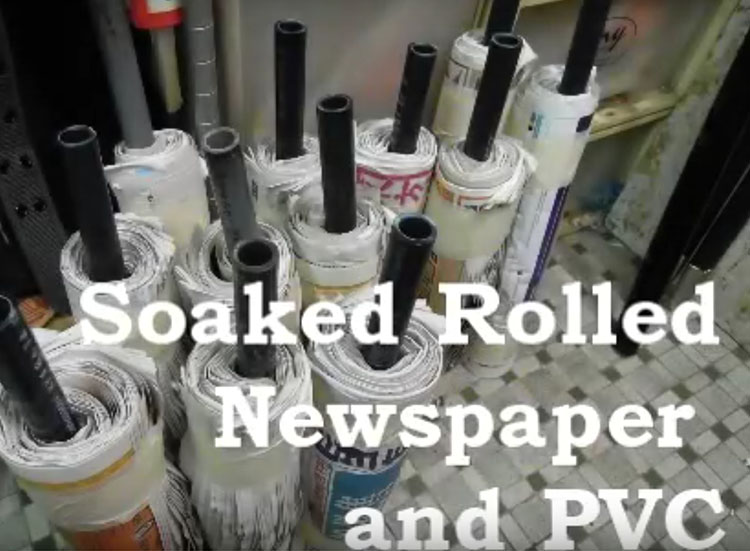
The
actual results on the harder targets were somewhat mixed - the swords had no
problems cutting the tightly rolled newspaper but the contrast of he flexible and tough PVC pipes in the middle
often slowed the cut so it did not go all the way through - and as expected, it was only the extra leverage of the longsword that allowed it to achieve the best results, cutting through the pipe and leaving it hanging off by a few layers of soaked paper.
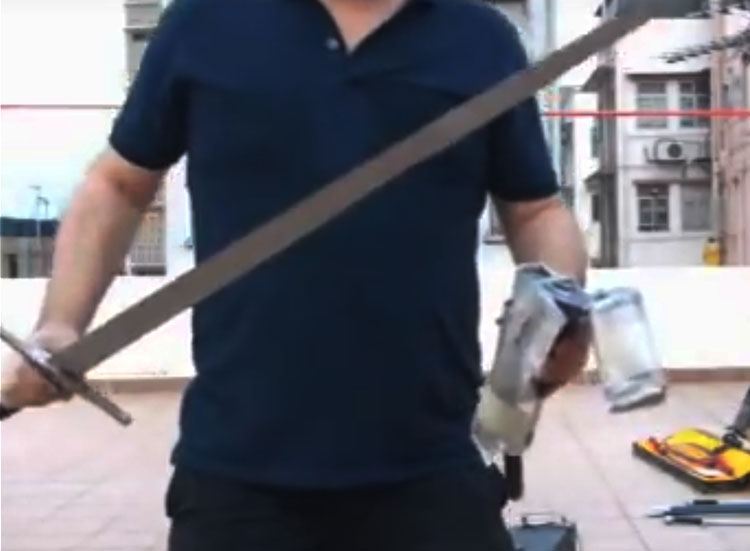
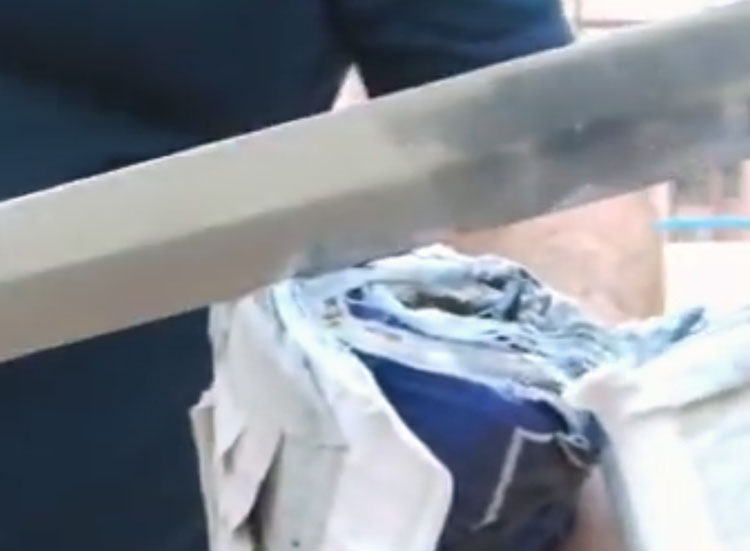
Next up was some hard core bamboo, and I mean hard core.
Bamboo comes in a lot of varieties and this stuff is easily the toughest I have seen - and was exceptionally hard to cut - even causing edge rolling and damage to several Katana we tested on it that day.
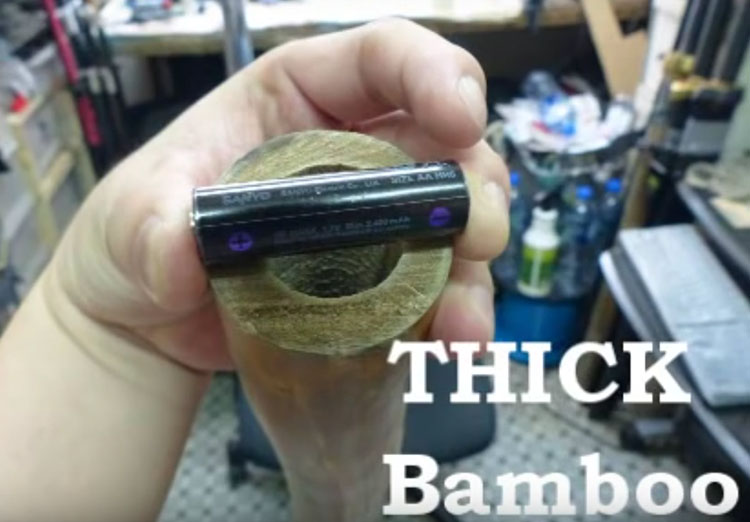 Whoah.. Thickest bamboo walls I have seen.. This is SERIOUSLY tough stuff
Whoah.. Thickest bamboo walls I have seen.. This is SERIOUSLY tough stuffNone of the one handed swords could do much to it, only cutting into the surface a little, but it wasn't a matter of sharpness so much as mass distribution, speed and technique. But it was one of Lancelot's students, Anthony Choi. who made it work: after initially failing to cut it with his favorite high end custom made Katana, the Longsword took it out cleanly with one blow!
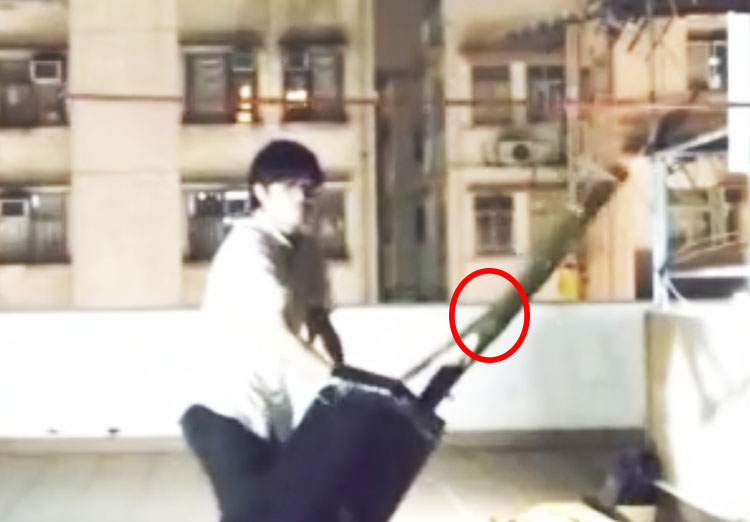 Failed with a high end Katana
Failed with a high end Katana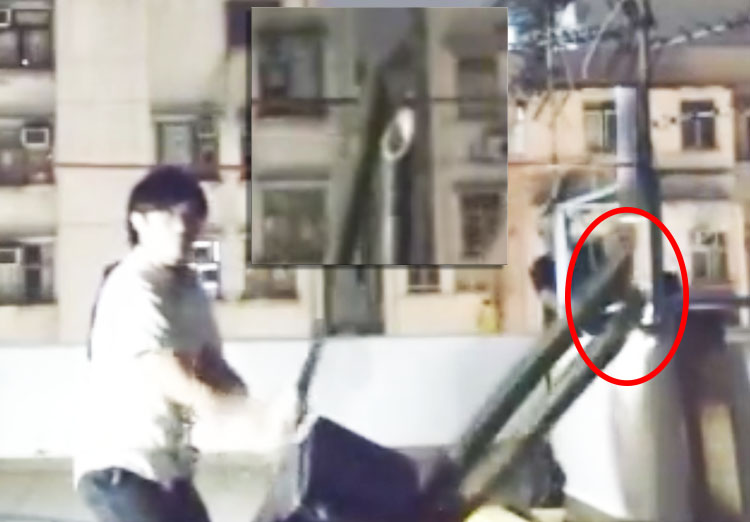 But a clean cut with the Longsword!
But a clean cut with the Longsword!Losing light, as we had spent several hours cutting in the afternoon, we
also tested some free hanging pork legs ala Cold Steel and while only the
Katana could cut all the way through, almost all of them suffered edge damage
while none of the Euro swords suffered any damage whatsoever. This is
consistent with what Hank Reinhardt had to say about Euro swords versus the
Katana in his excellent book "The Book of Swords"
"Generally speaking, European swords were not quite as sharp as many Eastern swords, particularly the Japanese katana. This reflects the type of combat more than anything else. Although mail was not worn at times, shield and helmet were the two most common methods of defense. A sword with a thin razor edge simply wouldn't last very long when used to strike mail or a tough wooden shield with a metal boss and rim."
Pg 198, the Book of Swords, Hank Reinhardt

When cutting straight down into the multiple small bones of the pork shoulder, the blade went straight through and came away with not even a single mark. The same test on a high end ($1,400) Japanese sword resulted in multiple chips and some edge rolling..
The test results were clear, these swords were tough, had a good mass distribution for optimal cutting, and could - in some cases - outperform a Katana cutting bamboo!
Flex Testing
The next day after all the testing I spent some extra time with the RK Euro swords flex testing them as there had been a couple of the model 7 Longswords which had been reported as having less than ideal tempering (and were, as usual, promptly replaced and reported to the forge).
As you can see from the video below - all 3 swords showed extremely good tempering, the model 7 was the most flexible which is not surprising from its relatively thin, tapering profile - the model 8 sword was the second most flexible and model 9 was the stiffest.
In the video below you will also see a comparative flex test of a wall hanger decorative sword. Note how easily it bends, but does NOT return to center - and can even be bent, and broken in half, with bare hands..!
Clearly worlds apart - and even after being used heavily, the excellent tempering was clearly apparent in all 3 swords.
Destructive Testing..
After I had completed by flex tests, these swords were all packed up and sent back to Ronin Katana - and it was from here that the very same Longsword # 7 which we had already tested on waterbottles, PVC pipe cored newpaper rolls, thick bamboo and pork legs was to meet its fate..
Sword reviewer Matthew Jensen put it through an increasingly damaging series of tests including splitting dry wood, bending it to the extreme, banging the tip into lumber, cutting sheet metal, sword vs sword clashing, more extreme bending, and finally throwing a huge cinderblock on the blade to try and shatter it (though it did not break, but rather just took a nasty set) - banged it on a tree, started chopping at rocks and.. well in the end had to throw in the towel..
Conclusion
It has been a hard road to get there, but there is no doubt in my mind that these Euro swords have ARRIVED. Sure, the fittings may look a bit blocky - but they are solid and superbly assembled. The blades may not cut quite as well as a Katana, but they are much sturdier and are hard enough to hold the factory edge for hundreds of cuts on targets like water bottles and cardboard without the need to resharpen. And the tempering is perfect, ensuring they can handle hard targets without taking a set on a bad cut.
All
in all, not too bad - a little on the plain side - but if they are sub $300, it's decent value overall.
PROS
- Great handling and cutting ability right out of the box
- Excellent fit and finish
- Peened Pommels for maximum hilt integrity and overall durability
- Hard, well tempered blades that can withstand high levels of abuse
- Great price point
CONS
- Upgraded free scabbards look nice but not easy to wear without adjustment
- Somewhat over-sized, clunky looking (but solid) fittings
WHERE TO BUY
While you can buy direct from the Ronin Katana website, some of their policies are
quite harsh and customer service can be problematic to deal with. As
such we recommend you purchase them HERE at Kult of Athena
as they have faster shipping, kinder return policies, better customer
service and even prices can be lower depending on their in house QC
checks.
I hope this review and testing of the RK Euro Swords has been helpful. To return to Affordable Replicas of Medieval Swords from RK Euro Swords Triple Sword Testing and Review











